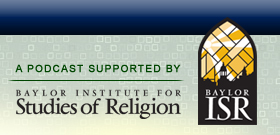

|
Laura Olson on Attitudes towards Religious Free Exercise  Date: September 18th, 2016
 In light of several recent Supreme Court cases — most notably Hobby Lobby and Obergefell — the issue of the First Amendment’s free exercise clause has come to the public’s attention, particularly as it pertains to public employees. When Kim Davis, a county clerk in Kentucky, refused to issue marriage licenses to same-sex couples based upon her religious beliefs, a debate arose about how religious freedom applies to government officials. Anticipating potential conflicts that might arise in a public school setting, Prof. Laura Olson from Clemson University, began a research project with several colleagues to survey the opinions of public school teachers around the country. She was interested in discovering what teachers thought about a variety of free exercise issues in the classroom including: 1) the ability of teacher’s to opt out of certain duties based upon religious belief; 2) facing penalties for expressing religious beliefs in the workplace; 3) supporting “unnamed officials” who were refusing certain job duties based upon conscience; 4) support for practicing religious activities on the job; and 5) support for teachers who want to provide clear moral direction on controversial issues. Laura provides us with historical background on how all of these issues became so salient since the middle of the 20th century. And while the results of her collaborative project are still being tabulated, Laura shares the rationale for the study, the research design, and some of the initial, topline findings. Interestingly, political ideology (i.e., conservative versus liberal) tends to be a more salient factor than partisan affiliation (e.g., Democrat, Republican) when it comes to these attitudes, with more conservative individuals supporting greater religious expression in the public school workplace. She and her colleagues also discovered that it was “orthodoxy” in (or strength of) religious belief that mattered more in determining one’s response than denominational identity and weekly attendance at religious services. All of this prompts Tony to ask Laura whether or not we might be seeing a new partisan re-alignment in the electoral landscape that is mediated by attitudes towards religious liberty. We discuss this and Laura also provides some thoughts on how the religious-political landscape has changed over the past several decades and what we might likely see in the presidential election of 2016. Recorded: September 12, 2016.
RELATED LINKS Prof. Laura Olson’s bio at Clemson University. Beyond Red State and Blue State: Electoral Gaps in the 21st Century American Electorate, by Laura Olson and John Green. Religious Interests in Community Conflict: Beyond the Culture Wars, by Paul Djupe and Laura Olson. Women with a Mission: Religion, Gender, and the Politics of Women Clergy, by Laura Olson, Sue Crawford, and Melissa Deckman. Christian Clergy in American Politics, by Sue Crawford and Laura Olson. Filled with Spirit and Power: Protestant Clergy in Politics, by Laura Olson. Religion and Politics in America: Faith, Culture, and Strategic Choices, by Fowler, Hertzke, Olson, and den Dulk. The Encyclopedia of American Religion and Politics, edited by Paul Djupe and Laura Olson. RELATED PODCASTS Matthew Franck on Hobby Lobby and Religious Liberty Jurisprudence. Mark David Hall on Religious Accommodations and the Common Good. Matthew Franck on Hosanna-Tabor and Ministerial Exemptions. John Inazu on the Four Freedoms, Religious Liberty, and Assembly. Francis Beckwith on Taking Rights Seriously. Jeremy Lott on America’s Shifting Religious Electoral Coalition.
Leave a Reply |
 Search The Podcast
To search the podcast, type a term and click the Search button.
  Browse Podcast Categories
Select a category below to browse the podcast:
   |














